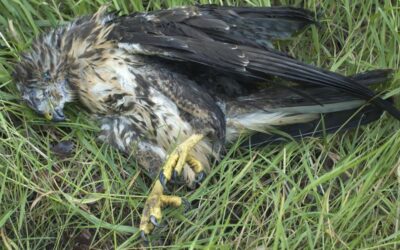Deer management targets to protect and restore nature in key areas of Scotland have been met, thanks to long-term collaborative efforts from estates.
This winter, landowners and managers have been working hard to make progress in two areas where control agreements are in place – North Ross in the west and Caenlochan in the east.
While deer are an important part of our biodiversity, in high numbers they can have a negative impact on woodlands, peatlands and other habitats. Sustainable deer management is vital to help protect and restore nature and tackle climate change.
To help achieve this, NatureScot can establish voluntary control schemes under Section 7 of the Deer (Scotland) Act 1996, to support landowners and managers through a formal agreement to carry out specific deer management measures and achieve agreed targets. These agreements – known as Section 7s – can be used to prevent damage to habitats, improve biodiversity or safeguard the public, for example from road accidents.
One area where a Section 7 agreement is in place is North Ross, covering around 87,832 ha stretching across Scotland from Ullapool almost to Ardgay. The agreement is between NatureScot and 16 local land managers, with the North Ross Deer Management Group playing a significant role.
The main purpose of the agreement is to prevent red deer from causing damage to the upland features in the protected areas of Beinn Dearg Special Area of Conservation (SAC) and Site of Special Scientific Interest (SSSI). The agreement was signed in 2019, with the aim of reducing deer densities to 10 deer km2 by spring 2024 – a target that has now been met thanks to collective efforts over the past five years.
Progress has also been made further east, where last year a new Section 7 agreement was agreed in Caenlochan. The agreement covers a large area (around 33,488 ha) to the east of the A93 in Glenshee, including the top end of Glen Clova / Glen Doll. It includes Caenlochan Special Area of Conservation (SAC) and component Sites of Special Scientific Interest (SSSIs) Caenlochan, Glen Callater and Garbh Choire.
The aim of the new Section 7 is to reduce the red deer population to 10 deer per km2 by spring 2026. Key targets for the first year of a three-year reduction cull have now been achieved.
Chris Donald, NatureScot’s Head of Operations for Central Highland, said: “Over this winter, estates in the North Ross and Caenlochan areas have worked hard to deliver culls in what was a difficult hind season with challenging weather conditions.
“Deer stalkers play a vital role in managing deer for the benefit of biodiversity and climate and we recognise and applaud the efforts of all involved working across these two Section 7 areas, both this season and historically.”
James Hall, Chair of the North Ross Deer Management Group, said: “I am proud of the work done by stalkers across North Ross to deliver the population targets agreed with NatureScot in challenging conditions.
“The results demonstrate that voluntary Deer Management Groups can deliver results, and Section 7 agreements are effective tools when land managers and NatureScot work in partnership with clear objectives and good communications.”
Doug McAdam, Chair of the South Grampian Deer Management Group (SGDMG), said: “The current Section 7 was agreed following a request from the DMG to NatureScot for a new agreement. The group wanted a framework that would better support voluntary collaborative deer management and achievement of DMG cull targets across the area.
“The SGDMG area, including Caenlochan, has seen deer numbers reduced progressively by the DMG over many years from highs of over 40 deer per km2 down to around 13 now, with an onward trajectory down to a target of 10 per km2 by spring 2026. However, as those involved in deer management know well, using deer densities as targets is fraught with issues as invariably the situation on the ground is much more complex. In Caenlochan this is absolutely the case. The real test will be what the habitat condition tells us over time as the deer numbers reduce and this is why an adaptive management approach is being followed.”
Tom Turnbull, Chair of The Association of Deer Management Groups (ADMG), said: “It is clear that voluntary collaborative landscape scale deer management is working and that both the North Ross and South Grampian Deer Management Groups have stepped up to deliver cull targets despite difficult conditions over the winter. Close working between NatureScot and Deer Management Groups is vital to ensure that habitat is protected, and that the important role played by deer managers is valued.”


0 Comments